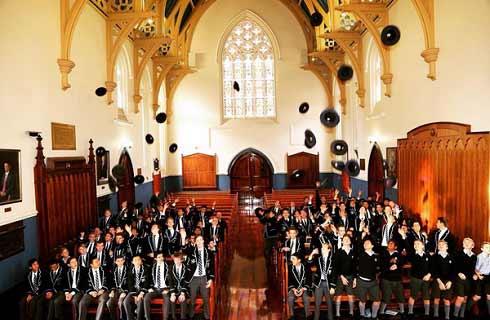- IDP China>
- 课程库>
- 人文科学>
- 哲学与宗教>
- 宗教研究>
- Doctor of Philosophy in Religion - The History of Religions in America
宗教哲学博士-美国宗教史
Doctor of Philosophy in Religion - The History of Religions in America

学历文凭
Ph.D.

专业院系
Religion

开学时间

课程时长

课程学费

国际学生入学条件
IDP—雅思考试联合主办方

雅思考试总分
7.0
- 雅思总分:7
- 托福网考总分:90
- 托福笔试总分:600
- 其他语言考试:Duolingo. A minimum score of 115 is required.
CRICOS代码:
申请截止日期: 请与IDP联系 以获取详细信息。
课程简介
History of Religions in America The study of religion in the U.S. has traditionally focused on church history and has organized its historical archives and questions through the normative lenses of Catholic empire in the New World and the dominant Protestant tropes of the primacy of the Bible, the Puritan City on the Hill, the notion of a manifest destiny, and numerous civil religious themes (think, for example, of the In God We Trust motto, officially established in 1956). But this, of course, is only one way of studying religions in the Americas. The graduate area of History of Religions in America takes up a different lens, one at once deeply historical and radically comparative. While paying very close attention to the biblical roots and normative European Christian traditions that did in fact come to dominate the public life, thought and rhetoric of the culture, this area of study privileges no particular religious narrative or form of religious experience. It does not see history as linear, but as circular, taking seriously the hermeneutical loop of the future of the past, that is, the awareness that future peoples read the past in ways that past peoples could not and did not, so that the future changes the past, and the past changes the future of religions in America. Thus, this area of study pays close attention to the concepts of the present past (the persistent return, uptake and recalibrating of the past to benefit the present religious communities) and revelatory alignment (aligning the past with new revelatory experiences).
相关申请
 预科
预科 奖学金
奖学金 实习机会
实习机会 在校学习
在校学习 跨境学习
跨境学习 校园授课-线上开始
校园授课-线上开始 在线/远程学习
在线/远程学习
开学时间&学费
学费信息仅供参考,请与IDP联系以获取详细信息
| 开学时间 | 时长 | 学费 | 地点 |
|---|
学校排名

世界排名86
数据源:
泰晤士高等教育世界大学排名
关于莱斯大学

莱斯大学是西南部最好的大学,在整个南部也只有杜克能与其相提并论。多年来以科学、工程、艺术、人类学闻名,并始终秉承低廉的学费与高水平教学并存的态度。建筑学是全美最好的本科项目之一,同时它的空间物理学科与美国国家航空航天局紧密合作。在梅隆研究员项目中,人文和社会科学专业将与教师导师们合作,共同进行学术项目的研究,同时会提供一定的夏季研究津贴。莱斯大学鼓励学生们选双专业、甚至三专业科学与工程学都是最好的学科,因此,这两门学科的竞争也特别的激烈。学校大概有4%的学生选择了双专业。,而且经常是“电气工程”和“艺术史”这种看起来毫不相干的领域相搭配。生物科学是最受欢迎的学科,其次还有运动学,经济学,心理学和英语。
本校相关课程
其他相关课程

Doctor of Philosophy in Religious Studies
 滑铁卢大学
滑铁卢大学学历文凭
Ph.D.
开学日期
课程费用总额


宗教研究文学士学位(3年)
 劳伦森大学
劳伦森大学学历文凭
Bachelor Degree
开学日期
课程费用总额


宗教学文学士
 达尔豪斯大学
达尔豪斯大学学历文凭
Bachelor Degree
开学日期
课程费用总额


宗教学文学士
 爱德华王子岛大学
爱德华王子岛大学学历文凭
Bachelor Degree
开学日期
课程费用总额


Doctor of Philosophy in Religious Studies
 劳瑞尔大学
劳瑞尔大学泰晤士高等教育世界大学排名:1491
学历文凭
Ph.D.
开学日期
课程费用总额


宗教研究文学硕士
 渥太华大学
渥太华大学泰晤士高等教育世界大学排名:188
学历文凭
Masters Degree
开学日期
课程费用总额










 美国
美国




